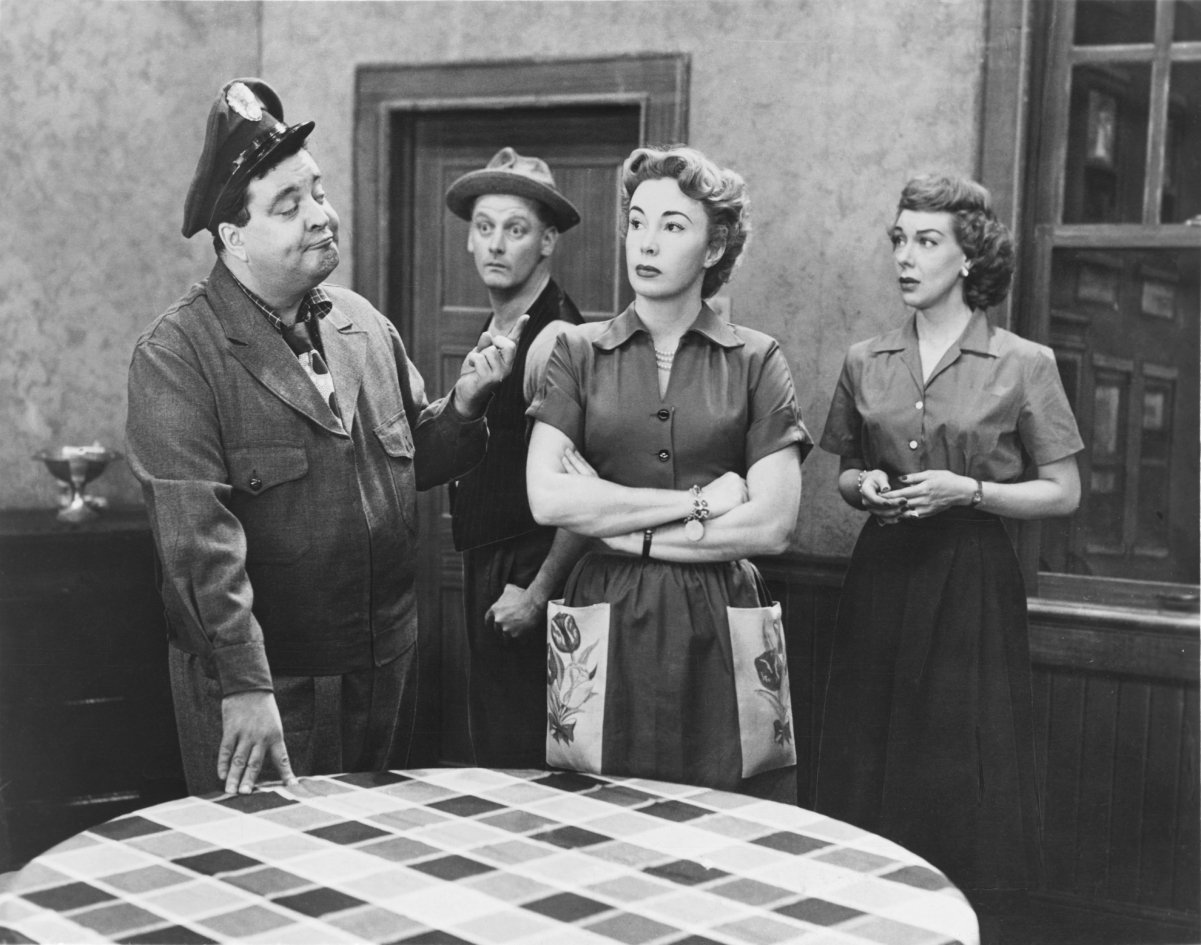
When The Honeymooners first aired as a half-hour sitcom on CBS in 1955, no one could have predicted it would become a cornerstone of American television. Though the series only produced thirty-nine official episodes — now known as the “Classic 39” — its impact has lasted for decades. Behind its cultural influence stood Jackie Gleason, a star who was both brilliant and notoriously uncompromising.
Gleason’s perfectionism was legendary. According to archival reports from MeTV, he often insisted on editing or reshaping episodes while production was already underway. Writers and staff were used to last-minute changes, but Gleason’s control ensured that the show carried his unmistakable vision. His dedication, however, sometimes created tension, as scripts were rewritten just hours before filming. What could have been chaos instead gave The Honeymooners its sharp timing and memorable rhythm.
The cast that surrounded Gleason was equally critical. Audrey Meadows, who played Alice Kramden, initially faced skepticism from producers. Some felt she appeared “too glamorous” for the role of a tough New York housewife. Yet Meadows proved them wrong. Her sharp wit and unshakable delivery balanced Gleason’s bluster, grounding Ralph Kramden’s blustering antics in reality.

Art Carney, as Ed Norton, became another iconic piece of the puzzle. Carney was originally a vaudeville-style comedian, known for improvisation. His ability to turn even a minor gesture into comedy gave Norton a depth that resonated with audiences. The partnership between Gleason and Carney became one of television’s most beloved duos.
Joyce Randolph, cast as Trixie Norton, was the youngest of the group and less experienced than her co-stars. Yet she embodied the working-class energy of the character, complementing Meadows while keeping the “everyday wife” dynamic relatable.
Together, the four actors created a dynamic that audiences instantly embraced. Gleason may have been the heart of the show, but without Meadows, Carney, and Randolph, The Honeymooners would never have achieved the same cultural weight. Their chemistry — sometimes forged under pressure — remains one of the great examples of ensemble performance in television history.
Even though the show ran for just a single season in its “classic” format, reruns and revivals ensured its immortality. The cast members would forever be tied to their roles, remembered not only for their comedic timing but also for the way they reflected the hopes, struggles, and humor of working-class America.
